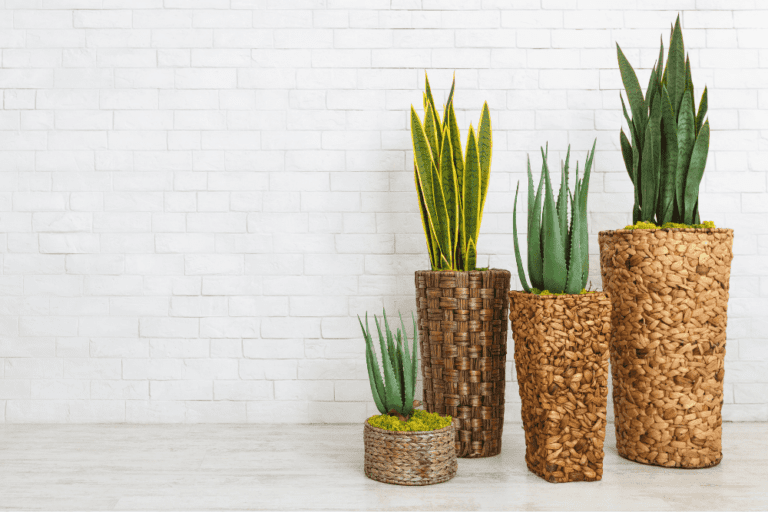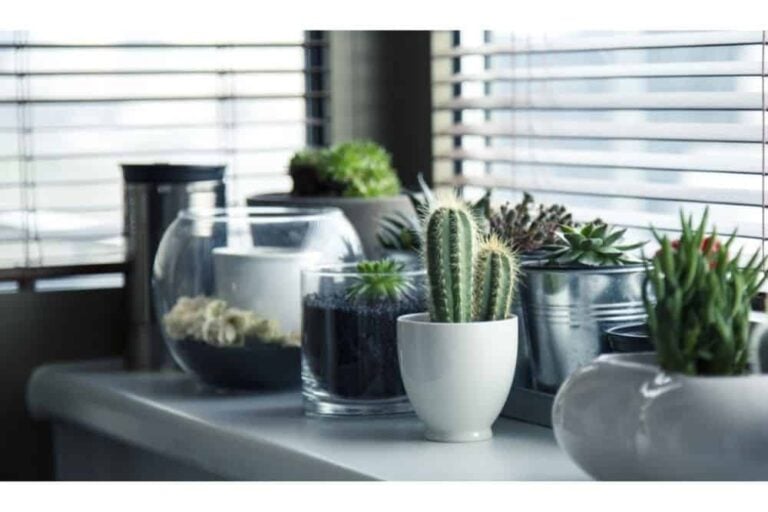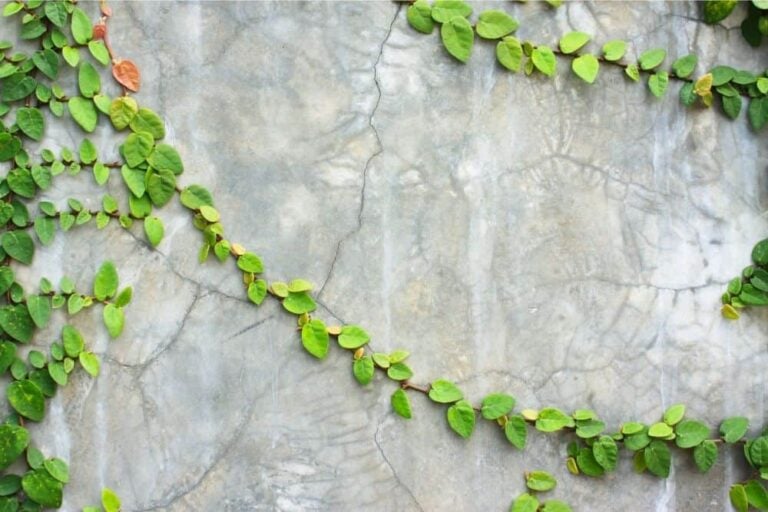Our Nifty Guide to the Best Plants for Terrariums
Our recommendations for the best plants for terrariums are the Terrarium & Fairy Garden Plants and the Fat Plants San Diego Succulent Cuttings. We choose two to cover the different environments you might want to choose. Each one includes a collection of plants so that you can get started right away. Sprucing up your terrarium will be that much easier if you check out our comprehensive list of plant candidates below.
Our Top Picks for the Best Plants for Terrariums
[wptb id="8028" not found ]What You Need to Know about Terrariums
Terrariums are just plain fun. Think of it as a living canvas. You are the artist and creator of your own world. You can create almost any type of environment in a terrarium. And the choice of plants will work no matter which you choose. Want to experience the desert? You got it. How about a tropical oasis? You need only pick the right plants to make your vision come to life.
In many ways, keeping a terrarium is similar to growing any indoor plant or container gardening. You control everything. And with that comes a responsibility to create the ideal environment for your plants. The challenges depend on the setting you choose. Whether a desert or tropical setting, each one requires careful attention to details—all of them. Moisture is the limiting factor.
Creating a Terrarium
The process of creating a terrarium will lead you on the path to choosing the right plants. The basic setup includes a container, base, and plants. Variations exist with the types of plants you choose to place in the planter.
Going Topless?
You can make your terrarium an opened ended kind of affair or add a top. Without a top, air circulates freely. Moisture doesn’t collect inside the container. Rather, there is a constant exchange of air within the container and the environment. But it makes for some important differences with a terrarium environment.
It is, therefore, a basic question that you need to consider. For example, a covered glass container works well for humid-loving plants. Succulents, on the other hand, prefer a topless container with sandy soil for a base. That is what you would want for a succulent terrarium.
Drainage
No matter what type of terrarium you choose, you’ll need a drainage base on the bottom of your container. It’s imperative for terrariums that water drains from the surface to prevent bacteria or mold formation. Either one is deadly for a terrarium. In a closed environment like a container, it presents more of a risk.
You can use a drainage base of stones and activated charcoal on top of it. The stones give the water a place to go. The charcoal serves the same purpose as it does in a water pitcher. It removes impurities that could cause bacteria formation and odors. It has industrial and agricultural applications to remove pollutants in drinking water and groundwater.
This video from the Mississippi State University Extension Service walks you through the process of setting up a diy terrarium.
Base
Drainage also applies to your substrate. Whether sand or soil, well-draining is the key to a healthy terrarium. Remember, your created environment must supply all the necessary nutrients that soil would provide in the wild. Since you control the setup, you have great opportunity to match the soil with the plants of your terrarium.
Many plants are tolerant of a variety of soil types. At a base level, they include sand, loam, and clay. In a terrarium, sand and loam are suitable given the closed conditions of a container. You can use potting soils to match the needs of your plants including amendments to suit different soil chemistry needs. It is one of the standout properties of indoor gardening.
To Moss or Not to Moss
Moss adds an extra layer of protection against excessive moisture loss. It adds a nice aesthetic touch too. If you’re trying to recreate a miniature forest, moss is the perfect addition. Moss absorbs and holds moisture. It helps to ensure that your terrarium plants won’t dry out from a lack of moisture.
While they lack the showy blooms, mosses are flowerless plants. Rather than flowers and seeds, mosses reproduce by spores. They have a dense, clumpy structure that has its own beauty. In a terrarium, they serve a practical purpose as well. In a light terrarium, they are optional. They depend on a moist environment that may not exist with all terrariums.
Stocking Your Terrarium
The size of your terrarium is another limiting factor for plant selection. It’s not just a matter of fitting the size of the container. It’s also a matter of being suitable for the whole concept. If you’re growing a variety of plants, every one should stand out on its own. It misses the mark if one plant overtakes all the other plants. It’s not a terrarium at that point, but a monoculture.
Fortunately, you’ll find many plants adapted to terrarium living. You’ll see dwarf versions of many common plants. It is truly a way of creating mini-environments. Some basic principles apply. You don’t want to set plants up for crowding by planting against the sides of your terrarium. They’ll need a bit of space too.
For a terrarium, the spacing allows for air circulation. Remember, that it is imperative in the closed space of a container to prevent mold formation. Your plants will also appreciate the extra wiggle room as they acclimate to their space. It’s essential, therefore, that you keep the size of your terrarium in mind when choosing plants. Avoid overcrowding them. Less is more.
Our Recommendations: Terrarium & Fairy Garden Plants and Fat Plants San Diego Twenty Five Small Succulent Cuttings
Creating a terrarium isn’t just an activity for kids. Adults can appreciate both the challenge and the relaxing atmosphere of a living recreation of a fantasy world. We loved the opportunity to create our own tropical paradise filled with exotic plants and perhaps, the lizard or two. We narrowed our choices to a variety of plants to get us up and going quickly with our terrarium.
The Terrarium & Fairy Garden Plants collection includes eight different plants to give you a jumpstart for creating your own terrarium. It offers an excellent way to get started especially when you’re unsure about what to get. We liked the variety of plants that includes a broad spectrum of colors. It makes for an eye-catching display sure to please.
The Fat Plants San Diego Succulents Cuttings is the ideal way for a beginner to get started with terrariums. Succulent plants have the ability to store water, so you have fewer worries about plants drying out. Moisture, of course, is a challenge with a terrarium. You want to keep it water levels adequate without creating an environment for mold and bacteria.
A terrarium is an excellent teaching tool to introduce your children to the concepts of botany and gardening. For adults, it’s an excellent way to create your own tropical oasis. Think of it as your island getaway. With a collection of a myriad of plants, you can capture the feel of your own rainforest. All you need is the island music and some leis.




